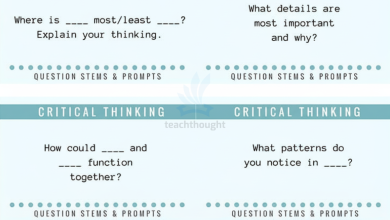Innovative Tips For Protecting Your Business Assets –

There are many obstacles to navigate when running a business.
Challenges are around every corner, and one wrong move can cost you. But what if you could remove some of those risks, especially when protecting your business assets? Keeping everything safe can be daunting whether it’s your physical equipment or digital data. But it doesn’t have to be. You can secure your business with a few smart strategies without breaking a sweat.
In this article, we’ll explore innovative tips to help you protect what matters most. Let’s dive in!
Implementing Advanced Security Systems
What is the first thing to consider? Security. This is the backbone of asset protection, both physically and digitally. Gone are the days when a simple lock and key could do the job. These days, businesses need to step up their game, which means investing in advanced security systems.
Think of biometric access for your office, for instance. Fingerprint scanners or even facial recognition can add an extra layer of protection. Technology like this is not just for big corporations anymore; it has become more affordable and accessible for smaller businesses, too. Combine that with 24/7 surveillance systems, and you’ve already added a solid wall of defense.
But what about digital assets? With hackers getting smarter, your firewall alone won’t cut it. Enter AI-powered security systems. These programs monitor your data in real-time, alerting you to suspicious activity faster than you can say “data breach.” It’s like having a digital watchdog, ready to bark at the first sign of trouble. Who wouldn’t want that?
Leveraging Cloud-Based Asset Management
Now, let’s talk about managing your assets, because it’s not just about protecting them, it’s about keeping track of them. Here’s where the cloud comes in. Cloud-based asset management is a game changer for businesses, allowing you to monitor everything from your inventory to financials from anywhere, and anytime.
Why is this so important? Imagine having access to real-time data on your business, whether at the office or halfway across the world. You can check on stock levels, track employee performance, and even see which equipment needs maintenance, all in one place. And because everything’s backed up in the cloud, you’ll never lose your data if something goes wrong on-site. That’s peace of mind right there.
Another bonus? The cloud is scalable. So, whether you’re running a small startup or managing a growing company, it adapts to your needs. Plus, with built-in security measures like encryption, your data is protected at every turn.
See also A Really Good List Of Essential Questions
Risk Management Software: Predict and Prevent
You’ve heard the saying, “An ounce of prevention is worth a pound of cure,” right? That’s exactly what risk management software offers. This tool helps you identify potential vulnerabilities in your business before they become full-blown problems.
Picture this: You can spot weak spots in your operations, like financial risks or security gaps, and fix them before they cause damage. Real-time data analytics can also help you predict potential threats, from market downturns to supply chain hiccups. The more prepared you are, the better you can protect your assets.
The beauty of risk management software is that it’s proactive, not reactive. You’re staying ahead of the curve, making informed decisions that minimize risk and maximize protection. And let’s face it, no one likes dealing with a crisis after the fact. Why not prevent it from happening in the first place?
Strengthening Your Cybersecurity Protocols
When was the last time you considered your business’s cybersecurity? If it’s been a while, it’s time to consider it seriously. Cybersecurity is no longer just for tech companies; it’s essential for any business that stores sensitive data, whether that’s customer information, financial records, or proprietary software.
So, how do you strengthen your cybersecurity? Start with the basics: secure your network with strong passwords, firewalls, and data encryption. Then take it a step further by regularly updating your software. Those updates are there because they often contain security patches that protect against the latest threats.
Consider training your employees. After all, even the best cybersecurity system can be undone by a single click on a phishing email. Make cybersecurity a priority in your office culture, and you’ll reduce your risk tenfold.
Regular Audits and Asset Evaluation: Keep an Eye on Things
Here’s something many businesses forget to do: regular audits. Think of them like a health check-up for your company. Just as you wouldn’t ignore your physical health, you shouldn’t ignore the health of your business assets.
Regularly evaluating your physical and digital assets helps you stay on top. Are there any weak spots in your security? Is any equipment nearing the end of its life? Does your software need an upgrade? By staying proactive, you can address problems before they become big.
Third-party security audits can also be a smart move. Sometimes an outside perspective can spot vulnerabilities that you might miss. And once those audits are done, create a schedule for maintenance and updates. Trust me, you’ll thank yourself later.
Insurance and Legal Protection: Cover Your Bases
Sometimes, despite all the layers of protection, things go wrong. That’s where insurance and legal safeguards come in. Insurance for a business may include everything from theft or property damage to cyber hacks. It is an assurance that you do not stand out in the cold when there is calamity. With modern solutions, you can even look for business liability insurance online, no need to get bogged down by in-person meetings to find the right cover.
Consult an insurance agent on the best policies suiting your business needs. And if you may, consider also consulting a legal expert to ensure all your intellectual property and physical assets are contractually protected. It’s one thing to have insurance, but having legal protection keeps you covered from all corners.
Business may be unpredictable, and even the most cushioned of companies have their share of difficulties. This is why one can never afford not to have a safety net handy in the form of insurance or legal protection.
Stay Ahead with Emerging Technologies
As technology continues to evolve, so do how we can protect our business assets. Keeping up with emerging tech isn’t just about being trendy, but about staying one step ahead of potential threats.
For example, blockchain technology has become a secure way to track assets and protect transactions. Its decentralized ledger system is nearly impossible to tamper with, making it a great option for businesses that need rock-solid security.
Then there’s AI, which can take your security to the next level. Beyond the AI-powered surveillance we discussed earlier, AI can help automate asset management and predict when something might go wrong. Predictive maintenance, for instance, can alert you to issues with equipment before they become expensive problems.
And don’t forget about the Internet of Things (IoT). By connecting your physical assets like machinery or vehicles, to the internet, you can monitor them in real-time. This makes managing everything from maintenance schedules to energy use easier, ultimately saving you money and keeping your assets in tip-top shape.
Protect What’s Yours
In today’s world, protecting your business assets is more than just a nice-to-have, it’s a must. Whether it’s through advanced security systems, cloud-based management, or keeping an eye on emerging technologies, there’s no shortage of ways to safeguard what’s yours. By staying proactive and adopting some of these innovative strategies, you can rest easy knowing your business is well-protected.
So, what are you waiting for? Take a step back and assess your current asset protection strategy. Are there gaps? Could you be doing more? The good news is, that with a few simple tweaks and a bit of planning, you can ensure your business assets are as safe as possible.
Remember, It’s not just about protecting what you have, but it’s about securing your business’s future.




